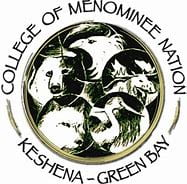Wisconsin’s 1862 Land-Grant Institution: University of Wisconsin
https://www.wisc.edu @UWMadison
Founded in 1848, the same year that Wisconsin was incorporated as a state. Much of what we understand about the land-grant institution’s tripartite mission – teaching, research, and service – follows the “Wisconsin Idea” first articulated by UW-Madison president Charles Van Hise in 1904, who famously stated that “I shall never be content until the beneficent influence of the University reaches every home in the state.”
President: Rebecca M. Blank became the president of UW in 2013, following a long stint in U.S. government, including positions as Under Secretary for Economic Affairs, Head of the Economics and Statistics Administration, and Deputy Secretary of Commerce. Dr. Blank has an impressive land-grant lineage, including a bachelor’s degree in economics from the land-grant institution University of Minnesota and a doctoral degree from the land-grant institution MIT. @BeckyBlank
Wisconsin’s 1994 Land-Grant Institutions: College of Menominee Nation, Lac Courte Oreilles Ojibwa Community College
College of Menominee Nation
http://www.menominee.edu @cmn_live
Chartered by the Menominee Tribal Legislature in 1993. The College of Menominee Nation was granted full accreditation by the North Central Association of Colleges and Schools in 1998, and is a member of the American Indian Higher Education Consortium. The main campus of CMN is on the Menominee Indian Reservation in Keshena, with a second campus in Green Bay that serves students from the Oneida Nation.
President: Paul F. Trebian became president of the College of Menominee Nation in 2018. President Trebian is a native of Alaska and a member of the Tlingit tribe. Dr. Trebian earned a doctorate in educational leadership and a MBA in technology management from the University of Phoenix, and he earned both a master’s and bachelor’s degree in architecture from the University of Wisconsin-Milwaukee.
Lac Courte Oreilles Ojibwa Community College
https://www.lco.edu @lcoocc
The college was founded in 1982 by the Lac Courte Oreilles Band of Lake Superior Chippewa Indians to serve the tribe and the local Hayward community. The college is accredited by the Higher Learning Commission and is a member of the American Indian Higher Education Consortium.
President: Russell Swagger became president of Lac Courte Oreilles Ojibwa Community College in 2018. President Swagger is a member of the St. Croix Band of Lake Superior Chippewa. Dr. Swagger earned an associate degree from United Tribes Technical College, a bachelor’s degree from Minot State University, a master’s degree from the University of Mary, and a doctoral degree from Capella University.
















